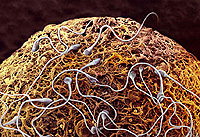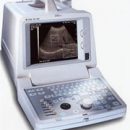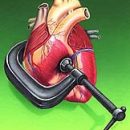When the end of the authority adds «IT», In medical terminology, this means an inflammatory process. This article is devoted to prostatitis, their diagnosis and treatment methods.
Content
According to urologists, most of the prostatitis is asymptomatic - that is, not causing any concern. The most frequent and first sign of inflammation is the pain localizing in the perineum in the scrotum area, at the bottom of the abdomen or walking along the inner surface of the thighs. Equivalent of pain may be a feeling of discomfort.
In the absence of diagnosis and adequate treatment, the inflammatory process in the prostate «Lives» and develops, with time, causing the emergence of new symptoms. The following violation is urination disorder: the urine jet is becoming weaker, the feeling of difficulty appears, frequent urges appear to urination (especially at night - this is called Niccountured).
In many cases, doctors detect a violation of the potency of varying degrees of severity - this contributes to chronic inflammation, which worsens the functional state of the prostate gland (and this body is not accidentally called «Gormonov factory»).
Prostatitis can manifest itself and the appearance of blood in sperm (in 10% of cases).
Acute and chronic
Prostatites are acute and chronic - depending on the severity of the process. In classical medicine it is believed that at first an acute process arises, which in the absence of treatment (or its inefficiency) goes into chronic. In reality, it is often prostatitis immediately begins with a chronic form - it is rather noticed at the stage of the sluggish process.
The beginning of acute prostatitis is difficult not to notice: the temperature increases, the overall well-being will deteriorate, and all this is accompanied by chills and the pain in the perineum. In the urine you can see pussy (greenish bunches) and blood. (I think you should not once again write about the need to appeal to the doctor if you have found listed symptoms.)
Chronic prostatitis leaks less pronounced - the temperature remains within the normal range, performance may not suffer, pain and uncomfortable sensations in the crotch area can be so weak that it does not motivate a man to see a doctor.
Infectious and aseptic

Infectious prostatites cause a variety of microorganisms. In turn, infectious prostatites can be called both microorganisms transmitted by sexual means and the usual (normal flora) of the body of a man. In the first case, the causative agents of acute prostatitis will be such pathogens as gonococci, trichomonas, mycoplasma and others; In the second case, the causative agents of the disease will streptococci, fungal infection and others.
Initially, the infection falls into the urinary paths; Prostate infection occurs through blood flow, lymphotok and through urinary tract. Analysis-functional feature of the male body is that all organs are located near and inflammation in one body initiates the contamination of another. Therefore, diseases of the urogenital system (cystitis, pyelonephritis) contribute to the development of prostatitis.
Aseptic prostatites are developing without the participation of infection, but symptoms can be the same as with infectious prostatitis. Therefore, for diagnostics it is necessary to contact the medical center and pass the examination. The absence of treatment leads to the transition of the acute process into chronic, which greatly complicates further treatment.
Development mechanism
Often everything begins with a neurotic state, when excessive value is attached to health - a man is worried, afraid, worries. Emotional state leads to a violation of regulation in the body, which disrupts blood circulation in the organs of a small pelvic, causing stagnation. In parallel, immune imbalance develops, which reduces stability to various inflammatory processes. This is how chronic prostatitis is formed, which in 95% of cases is asymptomatic. However, over time, erectile dysfunction of varying degrees of severity develops.
Risk factors
- Physical factors. Often, the symptoms of prostatitis appear after strong supercooling.
- Age - chronic processes are more peculiar to the average age, sharp occur at any age.
- Imbalance in the body: stress, change in hormonal background, allergic, immunological disorders, circulatory disorders and nervous conductivity.
- The presence of concomitant inflammatory diseases of the urogenital sphere.
What to do
If you have discovered one or more symptoms of prostatitis, you need to consult a doctor. It is not as scary as you think - modern diagnostic methods allow you to painlessly assess the condition of the prostate gland. For example, ultrasound will give accurate information about the consistency of the gland, its size and condition. Blood test and spermogram will also inform the inflammatory activity. Masions allow you to identify the presence of a flora that supports the inflammatory process.
Aphala
Depending on the type and stage of the prostatitis, the doctor may prescribe different drugs - from antimicrobial to improving the functional state of the prostate gland; to the latter and belongs to Afala. This medicine reduces the severity of the inflammatory process, eliminates pain and discomfort and normalizes urination. The undoubted advantage of the drug will be that he, in contrast to many drugs, does not reduce the erectile function. Indirectly, the drug can even endure an erectile function - due to the removal of the process of inflammation and improvement of the state of the prostate.









